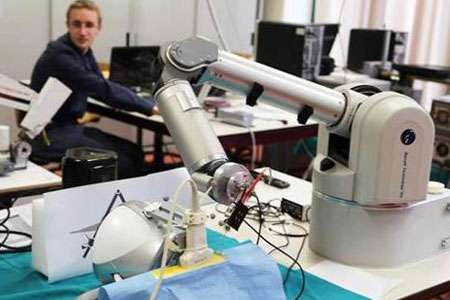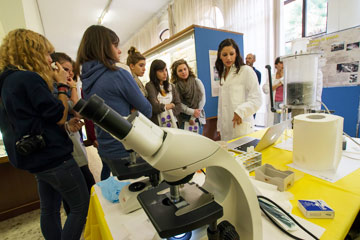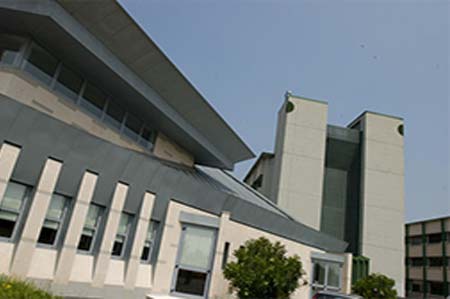This proposal aims at acquiring basic knowledge and developing novel methods that will enable to
perform automatic gestures in surgical procedures targeting deformable organs and tissues. This goal is
motivated by the need of the surgical community for more accurate devices that can assist in interventions
on pathologies that are currently either not operable or with a very low life expectancy. We envision the
autonomous surgical gestures as new tools for augmenting surgeon’s capabilities. Autonomous gestures
will be demonstrated on a test bed equipped with local sensors, with access to pre-operative models of the
surgical area, endowed of fast dynamics and of some reasoning capability, based on “a priori” knowledge
fused with real time sensor data. Since safety is crucial, the test bed will interact with the surgeon in a
shared-control manner, similar to an autopilot, where the human can share control and can take over the
task in emergency situations through a telepresence interface equipped with video and haptic feedback.
Although it is well known that automation has been successfully used to enhance a great variety of
human activities from aircraft control to manufacturing, the whole area of autonomous interaction of
surgical tools with biological tissues is rather unexplored. In the applications where it has been used,
automation has increased safety, accuracy, reproducibility, and has decreased human fatigue. Thus, we
hypothesize that similar benefits could also be gained by introducing automation to specific aspects of
surgical interventions.
The proposal addresses scientific questions that are very relevant to autonomy in the surgical
environment: modeling and knowledge representation of the surgical gestures and of their medical
implications; modeling, calibrating and registering the representation of the surgical area; reasoning about
the combined a priori knowledge about gestures and surgical areas; describing the real time knowledge
and the sensing requirements needed to achieve medical situation awareness during the gesture; designing
a suitable test bed; developing a task-based controller for the surgical gestures; and analyzing the legal
and ethical questions that these new technologies may raise.
The project will be organized in work packages, each addressing one of the scientific questions of
the problem. Although the problem is very difficult in its generality, by limiting the scope to simple
surgical gestures (puncturing, cutting and suturing) and to two anatomical areas (abdomen and vessels)
the project can achieve its objectives and develop general methods to address more ambitious surgical
actions.
The project results will be validated in a robotic test bed in which anatomical phantoms and exvivo
samples will be used. The test results will undergo a rigorous statistical analysis to verify the
generality of the results achieved.







